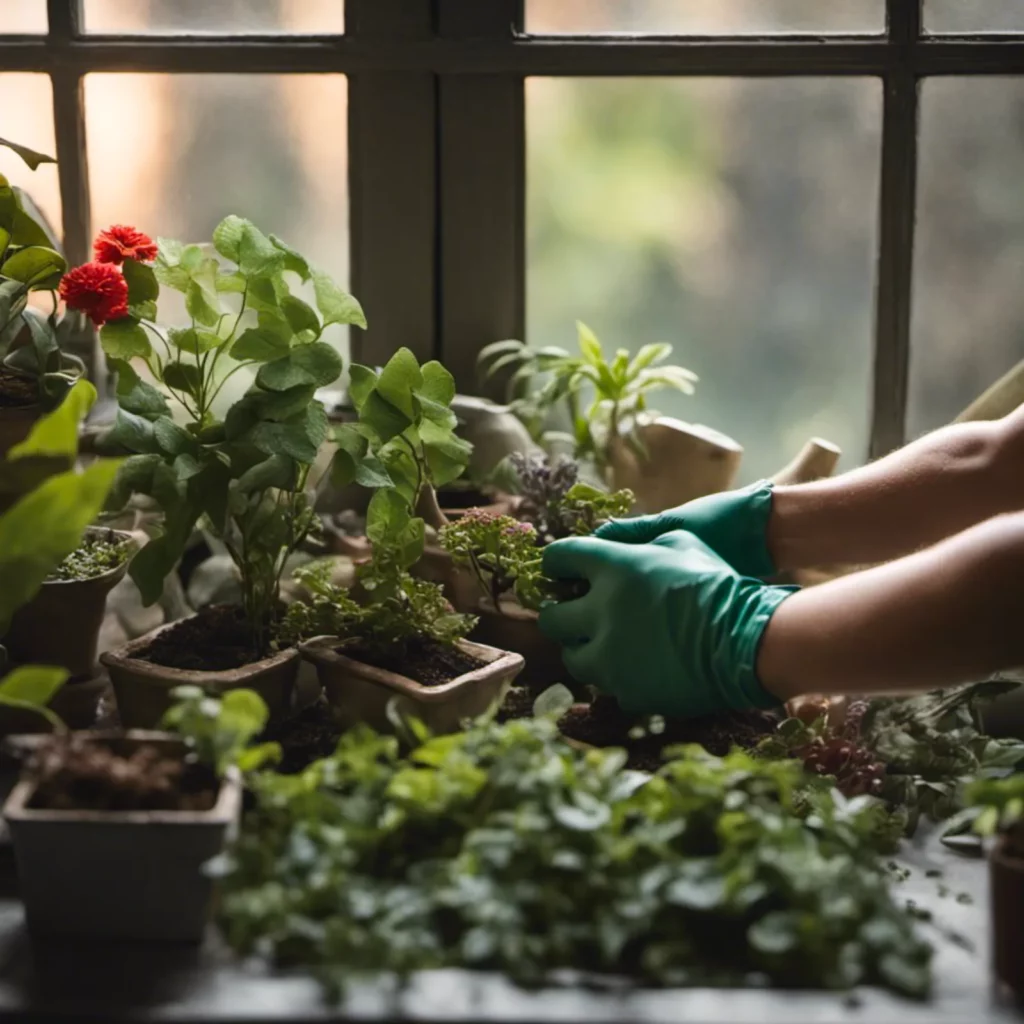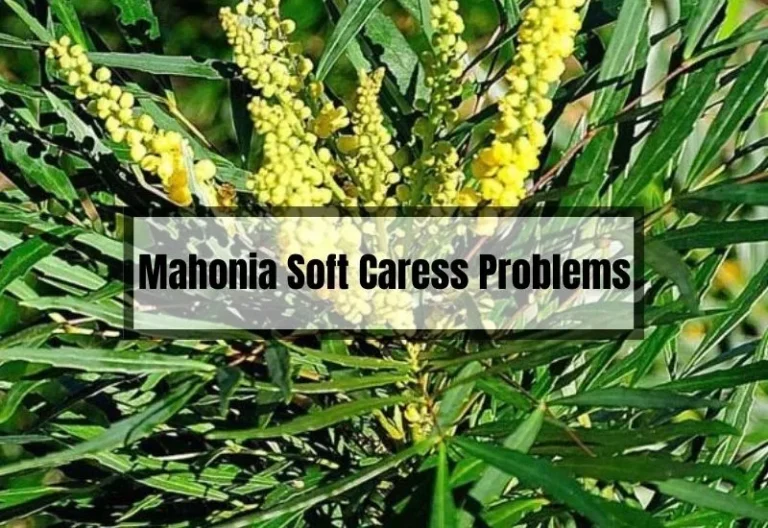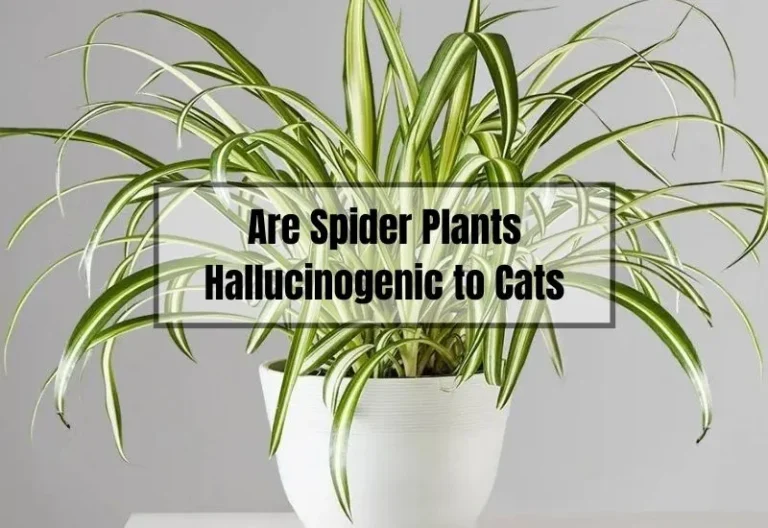Best Plants for Low Light Gardening: Top 14 Choices for Your Space
From Louise: Passionate about gardening, I specialize in plant care and flower knowledge. I’m here to share my expertise and assist with your gardening queries. Feel free to ask any questions or seek advice on lawn care—I’ll respond within 24 hours!
Struggling to keep indoor plants alive in low light conditions? Look no further! I’ve compiled a list of 14 plants that thrive in low light. Whether you have a basement apartment or a room with limited natural light, these plants will bring life to your space.
While many plants need lots of sunlight, these low-light options can survive and thrive in darker conditions. Perfect for adding greenery to homes without sunny windows. With care, create a beautiful indoor garden for joy.
This guide covers a variety of options, from tropical plants to easy-to-care-for houseplants, for those gardening in the dark. Grab your gardening gloves and let’s get started!

Understanding Low Light Conditions
As a gardener, understanding the lighting requirements of your plants is crucial to their growth and survival. In this section, we will explore what low light conditions are, how they affect plant growth, and the different types of low light conditions.
What is Low Light?
Low light refers to an area that receives little to no direct sunlight. This can be caused by a variety of factors, such as the orientation of the room, the presence of trees or other buildings blocking the sun, or simply the time of day.
How Does Low Light Affect Plant Growth?
Plants require sunlight to photosynthesize and produce energy. Without enough light, plants can become weak and stunted, and their leaves may turn yellow or drop off. However, some plants have adapted to low light conditions and can survive with less sunlight.
It’s important to note that even plants that can survive in low light conditions still require some amount of light to grow and thrive. If a plant is not receiving enough light, it may need to be moved to a brighter location or supplemented with artificial light.
Types of Low Light Conditions
There are several different types of low light conditions that plants may encounter:
- Indirect Light: This is light that is filtered through a window or shaded by a tree or other object. It is not direct sunlight, but still provides some amount of light to the plant.
- Bright Shade: This is an area that receives some direct sunlight, but is shaded for most of the day. Plants that thrive in bright shade can handle a few hours of direct sunlight, but prefer to be shaded for the majority of the day.
- Low Light: This is an area that receives very little direct sunlight, such as a north-facing window or a room with few windows. Plants that thrive in low light can survive with as little as 50-100 foot-candles of light.
Understanding the different types of low light conditions can help you choose the right plants for your space and ensure their success.
Personally, I’ve had success with a variety of low light plants in my own home, such as snake plants and pothos. These plants have thrived in areas that receive very little natural light, and have added a touch of green to my space.
Top 14 Plants That Thrive in Low Light
Here’s the list of plants we are going to be discussing in this post:
- Corn Plant (Dracaena fragrans)
- Chinese Evergreen (Aglaonema)
- Snake Plant/ Mother-in-law’s Tongue (Sansevieria)
- Peace Lily (Spathiphyllum)
- Moth Orchid (Phalaenopsis)
- Pothos/ Devil’s Ivy (Epipremnum aureum)
- Peacock Plant (Calathea makoyana)
- Arrowhead Plant (Syngonium podophyllum)
- Zz/ Zanzibar Gem Plant (Zamioculcas zamiifolia)
- Lucky Bamboo (Dracaena sanderiana)
- Parlor Palm (Chamaedorea Elegans)
- Philodendron
- Maidenhair Fern (Adiantum)
- Dragon Plant
1. Corn Plant (Dracaena fragrans)
Let’s kickstart the list with Dracaena fragrans or Corn Plant. This plant will give the dark spaces in your room the life they need with its various colours and shades. The corn plant is one of the best choices for people that have more of commercial necessity. You will find them in houses, apartments, workspaces and as landscape décor as well.
This plant has rather low water requirements and a longer life span compared to most of the other houseplants. Their small, tropical palm-like appearance will give your space a vibrant touch of green that it needs. While these plants are low-maintenance, be careful not to place it in direct sunlight and not to water it excessively.
An important point that you must make a note of is that corn plant is poisonous for dogs and cats. Hence, you may want to stay clear of these plants if you are a cat or dog-owner. You can commonly find these plants decorating offices and malls.
2. Chinese Evergreen (Aglaonema)
Next, we have Aglaonema or Chinese Evergreen. This one is hard to miss because of the various colours its leaves come in. You will find its variegated leaves in shades of red, yellow, green, and pink. This aspect makes them a great choice for those who wish to add a splash of colour to dark areas.
This striking yet tough plant is capable of surviving without water for extended periods, along with being highly drought-tolerant. So, if you have a spot that receives little to no sunlight, the Chinese Evergreen is what you’re looking for.
Pay attention to the colour of the leaves before you purchase one. Please make sure you pick one that is greener as it will grow better in the dark than the others. The newer hybrids require medium light conditions and will lose colouration if they are placed in a low light setting.
The Chinese Evergreen is a widespread plant that is commonly spotted in malls and offices. The reason for this is that they are a great option for low-light houseplants. You do not have to invest in those pricey, high-maintenance plants anymore. All you need is a Chinese Evergreen to knock admirers off their feet!
Check out some gorgeous Aglaonema varieties to see what options these species have to offer!
3. Snake Plant/ Mother-in-law’s Tongue (Sansevieria)
Why we had to include this plant in the list is because of how little maintenance it requires compared to most houseplants. Funnily, these plants are also called mother-in-law’s tongue to describe the sharpness of their leaf blades.
Snake plant is an excellent option for spaces that have low light conditions. These tall, dense plants can comfortably grow in dark, tight areas such as room corners, stairways, windowless rooms and even closets. Another advantage that contributes to its low maintenance is the lack of pruning or dropped leaves. All you need to do as a snake plant-owner is to water them occasionally, once every few weeks.
Also, here’s a fun fact: Snake plants were voted one of the best plants for air filtering according to NASA!
Ideally, it is extremely difficult to kill a snake plant. You can go away on vacation for a couple of weeks and still find a fresh-looking plant once you return! Unlike other plants, snake plants absorb carbon dioxide during the day and release oxygen during the night. Growing one in your bedroom will allow you to breathe fresh air and help you fall asleep peacefully.
As snake plants are succulents, they tend to store water in their leaves. Hence, overwatering them is a common mistake people make. Therefore, carefully check whether the soil is fully dry before you water it. Watering it every three weeks or so is generally recommended for these plants.
4. Peace Lily (Spathiphyllum)
We have included Spathiphyllum or Peace lily for those who want a sense of peace and serenity to their rooms. These are the ideal houseplants because you must shelter them from direct sunlight. It is tough for their white flowers held by dark green foliage not to catch your attention!
Peace lily thrives in medium to low light conditions and requires to be watered more frequently than other houseplants. While they cannot be exposed to too much light, peace lilies cannot bloom in complete darkness.
To ensure that you are keeping it healthy, keep checking for browning of leaves. Growing these plants in the dark is harmful to its foliage. Hence, it is crucial to choose a suitable location for it carefully.
It is recommended to water them once every week. Yellow leaves are a great sign to check whether these plants are being overwatered.
Unfortunately, there is a downside: ASPCA has claimed that Peace lilies are a common houseplant that is toxic to dogs and cats. It is also crucial to keep these plants away from children.
Learn more about how to take care of peace lilies to be a responsible plant parent!
5. Moth Orchid (Phalaenopsis)
If you desire to add a pop of colour to the dark spaces around your house, well you have a perfect choice right here. All they require is some low light and some soilless orchid mix, and they will peacefully bloom to make your room look fun and vibrant! You can check out some recipes to prepare soilless orchid mix yourself.
These plants need a good amount of moisture to thrive. One great advantage that will make you lean towards purchasing these plants is that they do not need too much soil to grow. They also do not require any light. Overall, moth orchids are rather easy to nurture and are extremely low maintenance.
The Moth Orchid is best known for its beauty and is commonly used to produce various hybrids all across Asia and Australia. The hybrids are available in different colours such as pink, purple, and white moth orchids.
6. Pothos/ Devil’s Ivy (Epipremnum aureum)
Pothos, Devil’s Ivy or Devil’s Vine is commonly used to decorate high shelves with the help of hanging baskets. They have a majestic appearance because of the trail that elegantly falls, making quite the statement! Their bright yellow-green or neon leaves too striking for anyone to overlook as well.
If you have medium to low light spots, these are the perfect choice to fill them with. These plants are also flexible and compact enough to adjust and grow in almost any space comfortably. Devil’s Ivy does not need to be watered regularly. It is recommended to water them once every ten days, and they will be happy!
Remember to be patient when you purchase these plants because they are not fast-growing. Their growth is a slow process and will take a considerable amount of time to see an observable difference. Interestingly, Devil’s Ivy is capable of growing without soil and can thrive in just water too.
Go ahead and learn how to grow a gorgeous Devil’s Ivy!
7. Peacock Plant (Calathea makoyana)
This plant indeed has multiple names. Rattlesnake plant, Zabra plant and Cathedral Window are some of them. It is named ‘Peacock plant’ because of its gorgeous, colourful foliage, similar to the colours of a peacock.
Peacock plants thrive best in moist soil and must be watered by rain or distilled water. Ensure that the water never dries out and retains enough moisture for their growth.
Placing them in medium to extremely low light is ideal for these plants. When exposed to direct sunlight, you will notice that it becomes dull and starts developing pale spots over the surface of its leaves.
This is how you can learn how to take care of a peacock plant!
8. Arrowhead Plant (Syngonium podophyllum)
Theses delicate plants with their light green foliage are not that hard to cultivate and look after. Arrowhead plants are commonly seen in homes and office spaces. They love to grow in medium to low light conditions and can also thrive it high-shade or dark places.
Make sure not to expose them to sunlight as they may get bleached if exposed for too long. If you have pets or children around, make sure they do not eat it as they are toxic. You can also trim these potentially 6-foot plants to shorter bushes if that is what you prefer.
9. ZZ/ Zanzibar Gem Plant (Zamioculcas zamiifolia)
Now, to the toughest of them all: the ZZ plant or Zanzibar gem! It can comfortably grow in low light conditions and is extremely easy to maintain.
You can go away on holiday for weeks and still not worry about the plant because it is going to stay fresh and very much alive by the time you return! Their glossy green leaves make dark spaces bright and vibrant to look at.
Because of how resilient they are, they are also commonly called the ‘eternity plant’. They thrive best when maintained on the drier side. The ZZ plant is exceptionally resistant to pets as well. You can leave it in the dark for extended periods with worrying at all. It is recommended to water them once every two weeks.
10. Lucky Bamboo (Dracaena sanderiana)
Lucky bamboo is another plant you can conveniently grow without too much extra work. You will most probably receive them in a container filled with just water and rocks when you purchase them. While they are capable of growing in soil too, water is the more widespread option.
While Lucky bamboos are capable of surviving for years without any fertilizer, they will not exactly flourish. You will see them gradually turning yellow and losing their original form. People may have told you that these plants do not require fertilizers but trust us, they do!
You can change the water of your Lucky bamboo once every week or two. If you follow the essential tips to grow Lucky bamboo, you will see it flourish for the years to come!
11. Parlor Palm (Chamaedorea elegans)
Parlor Palm is one plant that is extremely easy to grow! It is a slow-growing plant but reaches a decent size after a couple of years. You can conveniently grow them in windowless areas as well.
Ensure that the drainage in the pot is efficient. Water the plant every time the soil feels dry when you touch it instead of waiting for a specified amount of time.
There is no fixed period after which you can water them as it is highly dependent on your area’s environmental status. It would be best if you also ensure that the palm is not grown in extreme moisture conditions either.
12. Philodendron
This family of plants, Philodendron, comprises of a plethora of indoor plants. These plants can range from being low, bushy ones to wide, tall ones. You can also find small houseplants like trails.
The plants of this family have a hard time surviving in extremely low light conditions. Hence, you need to choose a location is in a medium-light condition.
One popular example of a plant from this family is Selloum. Philodendron selloum is a common favourite for many people. These plants are generally bushy and dense and can grow as tall as 5 feet. This family also include ‘brasil’ which are trails like houseplants and ‘monstera’ which is bushy and features cut-out foliage.
There is not much to worry about watering these plants too much. Watering them every ten days is more than sufficient to maintain them healthily and happily!
13. Maidenhair Fern (Adiantum)
The Maidenhair Fern has got to be one of the exquisite-looking houseplants. It is surely capable of turning up the beauty levels of any room it decorates! You can incorporate it into your garden as well to make it look more picturesque.
It would help if you chose a spot with medium-light to grow these plants. They are also capable of growing in high-shade or dark places. Please keep it in soil that is humid and moist enough for it to thrive in. It is most recommended to use distilled water to water these plants.
The downside of growing this plant that it is not exactly low maintenance. They are quite prone to damage and perish easily. Hence, to keep those beautiful leaves growing, one must put in some additional efforts.
Learn more about how to take care of Maidenhair Fern to make your room look aesthetic!
14. Dragon Plant
You will be relieved to know how easy this plant is to nurture. The Dragon plant can either be grown both outdoors and indoors. It will hardly require your attention and does not need too much sunlight either. The rate at which Dragon plants grow is rather high because of their deep roots.
As the rate of growth of this plant is super high, there are containers with specific measurements that you are recommended to purchase if your purpose is indoor.
One point you must remember is that Dragon plants are not the best at thriving in winters. Hence, we suggest if you have them outside during the winter season, make sure to move them indoors.
Tips for Gardening in Low Light Conditions

Maximizing Natural Light
When gardening in low light conditions, it’s important to make the most of any natural light available. Here are some tips:
- Place plants near windows that receive the most sunlight
- Trim any overhanging branches or foliage that may block sunlight
- Use reflective surfaces, such as mirrors or white walls, to bounce light around the room
Using Artificial Light
If natural light is not sufficient, artificial light can be used to supplement it. Here are some things to keep in mind:
- Choose the right type of light: LED or fluorescent lights are best for indoor gardening
- Position lights close to plants, but not too close as to burn them
- Use a timer to ensure plants receive the proper amount of light each day
Choosing the Right Soil
Plants grown in low light conditions require soil that is well-draining, but also retains moisture. Here are some soil options to consider:
| Soil Type | Advantages | Disadvantages |
|---|---|---|
| Peat Moss | Retains moisture well | May become acidic over time |
| Coconut Coir | Retains moisture well, sustainable option | May require additional nutrients |
| Perlite | Improves drainage, lightweight | May require additional nutrients |
Watering and Fertilizing
Proper watering and fertilizing is crucial for plants grown in low light conditions. Here are some tips:
- Water plants only when the top inch of soil is dry to the touch
- Use a water-soluble fertilizer every 2-4 weeks to provide necessary nutrients
- Avoid over-fertilizing, as this can lead to burned roots
With these tips, you’ll be able to successfully garden in low light conditions and enjoy a thriving indoor garden.
Summary
Finally, we have reached the end of this post! We hope you got some great houseplant ideas for you to make your dull, boring spaces look more vibrant and alive.
Please pay attention to how well the plants you pick adapt to their new home and allow them to acclimatize comfortably. We also recommend you putting it in medium low light conditions for at least three days before you move it to its permanent location.
Adding some gorgeous plants to your bedroom, living room, or workspace will make a significant difference to the room’s energy and aesthetics. Check out the plants as mentioned above and you will indeed be surprised with the results.
Good luck with becoming a happy plant parent!





